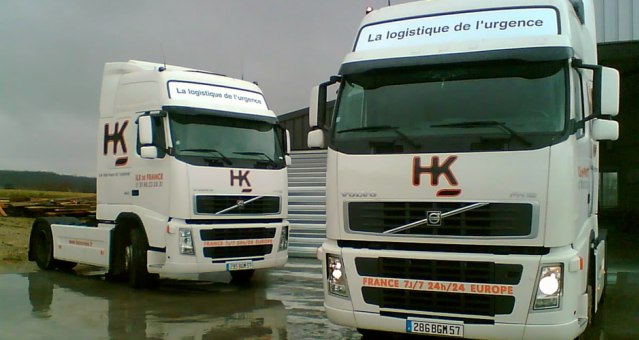ADR definition: what you need to know about transporting dangerous goods
In a world of ever-increasing trade, the transport of dangerous goods by road represents a crucial safety issue for companies, drivers and the general public. Whether for flammable, toxic or explosive products, it is imperative to comply with strict rules to minimize risks. TheADR, or Agreement Concerning the International Carriage of Dangerous Goods by Road, is the essential reference that governs this activity. Here's how it works.
ADR: transport your hazardous materials safely
The ADR is an essential regulatory framework for the safe road transport of hazardous materials. This code harmonizes the rules so that companies can transport their hazardous materials quickly, efficiently and, above all, without danger to people or the environment.
How Geneva 1957 revolutionized road transport of dangerous goods
The history of ADR began in Geneva in 1957, when an international agreement was signed in response to the need to regulate the transport of dangerous goods in Europe. At the time, increasing international trade was exposing people to major risks, and this text laid the foundations for greater safety, by establishing clear standards.
Why ADR is essential in Europe (and in France) to make your journeys safer
Today,ADR is applied in over 50 countries, including all European states, with France at the forefront. This widespread adoption means that goods can circulate smoothly, while complying with strict requirements along the entire route. Companies benefit from a stable, recognized framework for their operations.
Did you know? HK Courses, expert in express parcel delivery is authorized to deliver delivery of dangerous goods. Our teams are here to help you master this code and guarantee safe, reliable and compliant transport.
.jpg)
Deciphering the ADR regulation: the keys to understanding its requirements
Understanding the 9 hazard classes: what are the risks for your goods?
The regulations are based on the classification of goods into 9 hazard classes. Each class corresponds to a type of risk: explosives, gases, flammable liquids or solids, toxic substances, etc. This precise classification determines the safety measures to be applied, particularly with regard to packaging and handling.
Packaging, tanks, markings: rules not to be overlooked
Goods must be packed in ADR-compliant packaging or tanks. These containers are designed to withstand shocks, prevent leaks and display specific markings indicating the nature of the hazard and the precautions to be taken.
Vehicles and drivers: the essentials for worry-free driving
Vehicles carrying hazardous goods must be equipped to precise standards, including signage, fire extinguishers and safety devices. What's more, drivers must undergo appropriate ADR training to master the risks and react effectively in the event of an incident.
In France, ADR is reflected in concrete rules and key players
The TDG decree: the French translation of the European regulation
In France, application of the ADR is governed by the TMD (Transport de Marchandises Dangereuses) decree. This text specifies the national procedures for ensuring rigorous implementation, adapted to local conditions while complying with European standards.
The safety advisor: your best ally in avoiding risks
Any company involved in the transport of hazardous materials must appoint a safety advisor. This professional is responsible for ensuring compliance with the rules, staff training and risk management, thus becoming an essential link in the safety chain.
ADR developments: what you need to know about the latest updates
Why ADR is revised every two years: innovation and safety at the heart of the code
The ADR is updated every two years to incorporate technological innovations and feedback, ensuring that the regulations remain in step with modern safety issues.
Version 2023: major changes for the sector
Version 2023 of the ADR has introduced significant changes to enhance the safety and compliance of dangerous goods transport, including:
- Training requirements, including mandatory modules for managing incidents involving flammable gases or toxic products. For example, drivers transporting flammable compressed gases must now take an additional module dedicated to the specific risks associated with these substances.
- Details on packaging, such as tanks carrying flammable liquids, which now have to pass additional pressure and thermal resistance tests to ensure better sealing in the event of an accident.
- Enhancements related to the transport of flammable gases, in response to the sector's contemporary challenges. Version 2023 introduces precise requirements on tank filling limits to avoid dangerous overpressure, and on mandatory ventilation devices in storage compartments.
New markings and signage, as well as the integration of new technologies (in-vehicle monitoring systems) have been introduced in version 2023.
And the 2025 version?
The 2025 version will continue toadapt the regulations to changes in the sector, including :
- Specific rules for the transport of electric vehicles and lithium-ion batteries.
- Increased integration of digital traceability for real-time tracking of dangerous goods.
- Tighter control over the transport of hazardous waste.
- Technical innovations and feedback to guarantee safety and efficiency.
These developments aim to anticipate the risks associated with new technologies, while facilitating safe, compliant road transport.
Safety and risk: the vital issues behind ADR
How ADR helps reduce road accidents
Strict compliance with ADR regulations drastically reduces incidents during the transport of hazardous products, protecting drivers, the public and the environment.
Compliance and sanctions: what unprepared companies really risk
Failure to comply with ADR exposes companies to severe penalties, ranging from heavy fines to criminal prosecution in the event of an accident. Compliance is not just a legal obligation, but a necessity to preserve reputation and business continuity.
